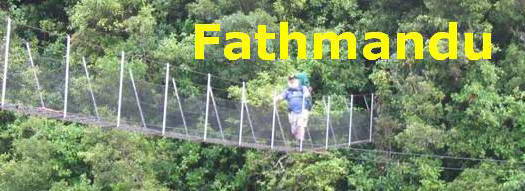
Many thanks for permission to use graphics from their software and toposheets |
 |
|
A brief intro to volcanoesThere are three basic types of volcanoes:
Scoria is a textural term for macrovesicular volcanic rock. [macro = large; vesicle = cavity]. As the liquid rock nears the surface, the pressure decreases, and any dissolved gases come out of solution to form bubbles. Think taking the cap off a bottle of beer. In contact with air the bubble-filled rock solidifies. Another name for scoria is cinder. Rhyolite: Highly viscous volcanic rock, usually 70% or more, being silica in combination with feldspar and other minerals Tephra is a generic term for what comes out of volcanoes. Tephra is fragmental material produced by a volcanic eruption regardless of composition, fragment size or emplacement mechanism. Tephra is typically rhyolitic in composition.. The distribution of tephra following an eruption usually involves the largest boulders falling to the ground quickest and therefore closest to the vent, while smaller fragments travel further—ash can often travel for thousands of miles, even circumglobal, as it can stay in the stratosphere for days to weeks following an eruption. Tephra mixed in with precipitation can also be acidic and cause acid rain and snowfall. Tephra fragments are classified by size:
The words "tephra" and "pyroclast" both derive from Greek. Tephra means "ash". Pyro means "fire" and klastos means "broken"; thus pyroclasts carry the connotation of "broken by fire". Tephra layers, which bear their own unique chemistry and character, can be used to date historical volcanic activity. We shall use information of this kind to date the Otuatua volcanoes relative to each other. The difference between scoria and pumice is that scoria has larger vesicles and thicker intervening walls. Pumice typically floats in water. Scoria doesn't. The original liquid rock from which scoria is formed is typically less viscous than that which forms scoria, allowing the bubbles to expand more vigorously and more quickly.
|
|